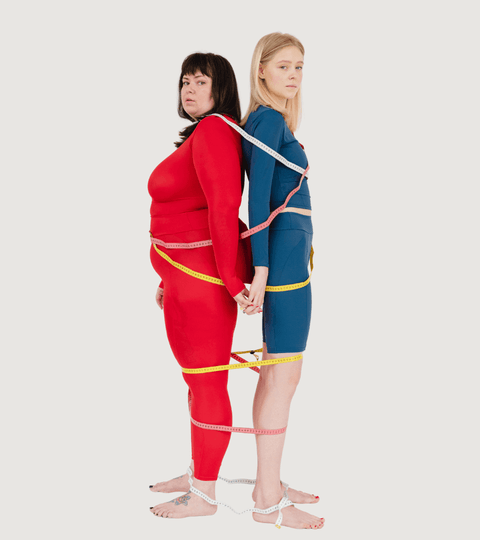Second-Hand Sizing: Why It’s Still a Struggle (And How to Fix It)
Second-hand clothing sizing can be a total mystery.
As resale culture explodes and the fashion industry shifts towards circularity, more people are embracing pre-loved fashion, but one frustrating issue still holds many back: the sizing struggle.
By 2030, it’s predicted that second-hand clothes will make up 18% of the average wardrobe. Yet as the UK continues to discard over 13 million garments per week, a lack of sizing consistency is creating a real roadblock to unlocking the full potential of sustainable style.
What’s the Problem with Second-Hand Sizing?
The core issue lies in the lack of standardisation across the fashion industry.
The very first sizing charts were introduced back in 1958 — and they haven’t kept pace with real bodies or modern design. Over time, 'vanity sizing' has caused constant shifts in what a “size 12” even means. For example, a women's size 12 in 1958 now equates to a modern size 6. That’s a huge disparity — and it makes second-hand shopping frustrating for anyone outside the sample-size norm.
Adding to the problem, the majority of garments available in resale platforms were originally produced by mainstream fast fashion brands — which tend to neglect extended sizing. So while second-hand fashion is technically more accessible, it still replicates the industry’s exclusion of bodies above UK size 12.
And unlike buying new, there’s usually only one of each second-hand item. No size exchange. No backup. If it doesn’t fit, it’s game over.

How to Hack the Sizing Struggle
There are a few practical ways to make second-hand fashion work better for your body:
- Know Your Measurements – Grab a tape measure and write them down. Every brand’s sizing is different, so your best bet is to check the original brand’s website and compare.
- Use Sizing Charts – Most resale listings will include the brand name. Use that to search for their official sizing guide before buying.
- Embrace Alterations – A small hem tweak or waistband nip can make a big difference. Most UK dry cleaners offer basic alteration services.
- Try Platforms Like The Seam – This digital service matches you with trusted local makers who can adjust or fully rework your pieces. They even offer free fittings in London.
- Get Creative with Reworking – Turn an ill-fitting dress into a co-ord set, or a long-sleeve into a cap-sleeve. Think of it as a custom upgrade, not a lost cause.

Beyond the Fit: Rethinking Thrifting
Thrifting is no longer a fringe movement — it’s a fashion rebellion embraced by the masses. People are drawn to it for the vintage finds, the authenticity, the one-of-a-kind gems. But here’s the twist: those pre-loved pieces aren’t the finish line — they’re the launchpad.
Reworking, tailoring, and reimagining second-hand clothes isn’t just about fit. It’s about reclaiming style, slowing down consumption, and choosing fashion with soul. So next time you thrift, think bigger. See the potential. Make it yours.
(information sourced on fashionrevolution.org)
(Featured Image by SHVETS on pexels.com)
(Image 1 by Michael Burrows on pexels.com)
(Image 2 by Ron Lach on pexels.com)


0 Comments
There are no comments yet. Be the first one to post one!